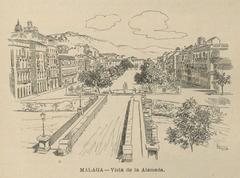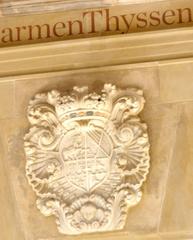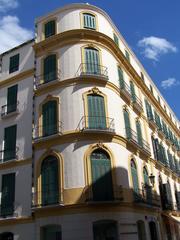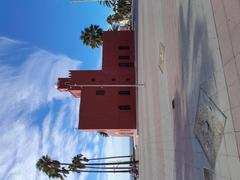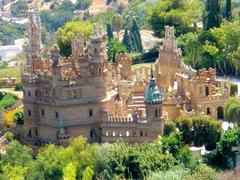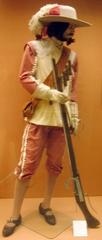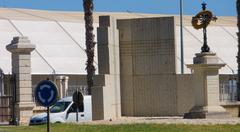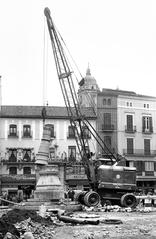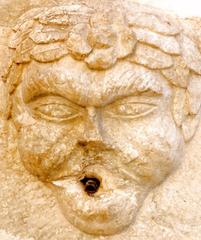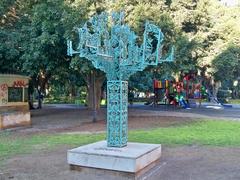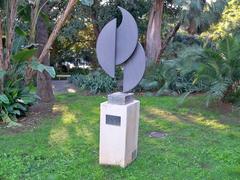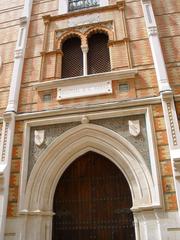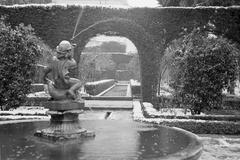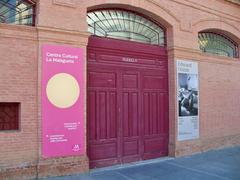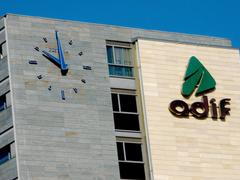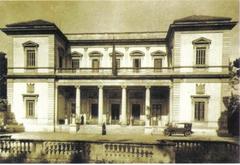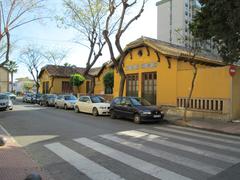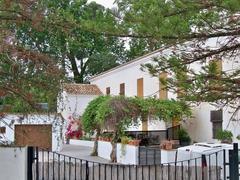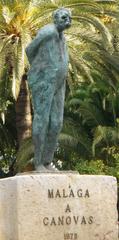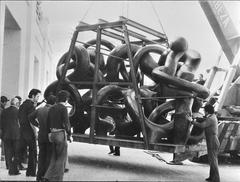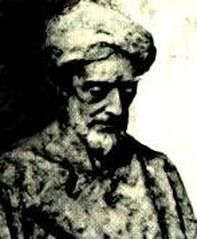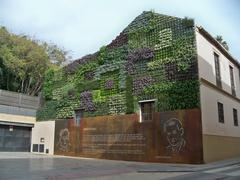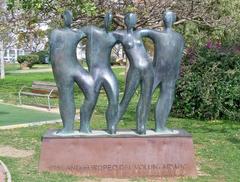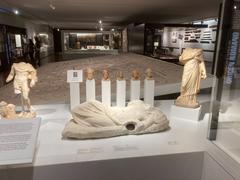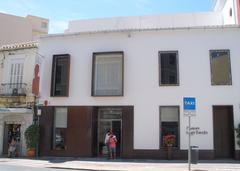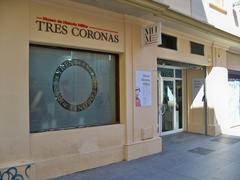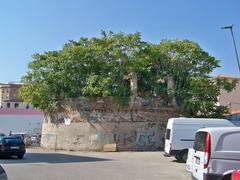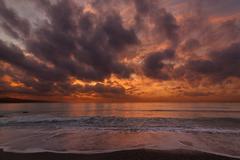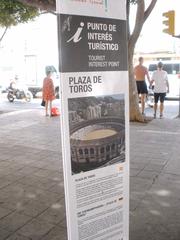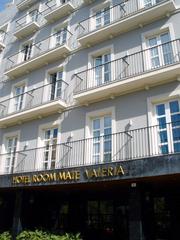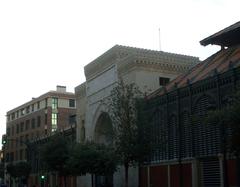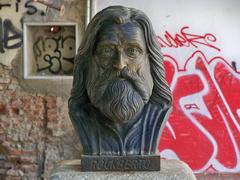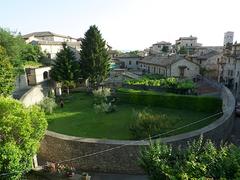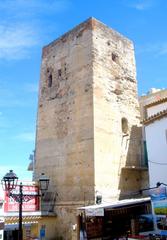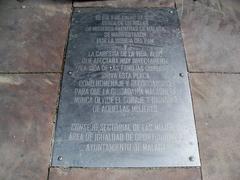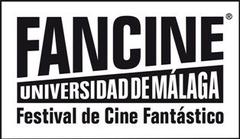Visiting the Monument to Niño de las Moras in Málaga, Spain: Tickets, Hours, and Tips
Date: 14/06/2025
Introduction
Nestled in the lively fishing neighborhood of El Palo, Málaga, the Monument to Niño de las Moras stands as a heartfelt tribute to Juan Ternero Mingorance—“Niño de las Moras”—a celebrated flamenco singer whose artistry embodies the essence of Málaga’s cultural and maritime heritage. This monument, located mere steps from the Mediterranean in Plaza del Niño de las Moras, is not only a marker of local history but a living centerpiece of community pride and flamenco tradition.
This comprehensive guide details everything needed for a meaningful visit: historical context, monument features, visiting hours, accessibility, nearby attractions, travel tips, and more. Whether you’re a flamenco aficionado, history lover, or cultural traveler, this site offers an authentic glimpse into Málaga’s soul.
(elpalo.org, malagaturismo.com, Malaga Hoy)
Table of Contents
- Introduction
- The Story of Juan Ternero Mingorance (“Niño de las Moras”)
- Monument Genesis and Symbolism
- Visiting Information
- Accessibility
- Nearby Attractions and Events
- Travel and Preservation Tips
- Frequently Asked Questions (FAQ)
- Visual Gallery
- References
The Story of Juan Ternero Mingorance (“Niño de las Moras”)
Juan Ternero Mingorance, born in 1886 in El Palo, Málaga, emerged from humble beginnings. From early childhood, he worked on the beaches pulling fishing nets and later became known for his melodic pregones—street cries—while selling mulberries (moras), which earned him his nickname.
By age 12, Mingorance was a professional flamenco singer, performing in local venues and eventually sharing stages with flamenco greats such as La Niña de los Peines. His artistry preserved and popularized styles like malagueñas and jabegotes—songs rooted in the rhythm of Málaga’s fishing culture. His impact was recognized nationally, including an award at the Festival Nacional de los Cantes de las Minas in 1969.
Niño de las Moras is remembered not only for his voice but for his embodiment of Málaga’s working-class spirit and deep connection to the sea, making him an enduring local legend. (elpalo.org, elartedevivirelflamenco.com, Wikipedia)
Monument Genesis and Symbolism
Creation and Artistic Features
The Monument to Niño de las Moras was commissioned in 1971 by the Peña Flamenca El Palustre, funded through community contributions. Sculpted by Garciana, the realistic bronze bust stands atop a stone pedestal inscribed with dedications from the Ayuntamiento de Málaga. The plaza is shaded by jacaranda and mulberry trees—evocative of the singer’s nickname and childhood environment.
The monument’s placement in a public plaza surrounded by Mediterranean flora underscores its role as both a cultural beacon and a gathering place for the community. It hosts annual flamenco events and neighborhood celebrations, ensuring that Niño de las Moras’s legacy remains alive and relevant.
Symbolic Significance
Beyond commemorating an individual, the monument represents Málaga’s broader maritime and flamenco traditions. The choice of mulberry trees and the prominent location in El Palo reinforce the intertwined identities of the neighborhood: its fishing heritage and its contribution to Andalusian music. The plaza is a place of memory, artistic expression, and community engagement. (elpalo.org, mas.laopiniondemalaga.es)
Visiting Information
- Location: Plaza del Niño de las Moras, El Palo, Málaga, Spain (Mapcarta)
- How to Get There:
- By Bus: Lines 11 and 34 connect Málaga city center to El Palo.
- By Car: Parking is available but limited during peak hours.
- On Foot/Bike: Coastal promenades and bike racks make access easy.
- Visiting Hours: Open 24/7 as an outdoor public plaza. Daytime visits are recommended for safety and best photo opportunities.
- Tickets/Admission: Free; no tickets required.
- Onsite Facilities: Benches, shade, interpretive plaques in Spanish and English, and nearby cafés and shops.
Accessibility
The plaza is wheelchair- and stroller-friendly, with wide, gently sloping pathways and accessible entrances. The flat terrain makes it suitable for visitors with mobility needs, though some adjacent historic streets feature cobblestones. Assistance dogs are welcome.
Nearby Attractions and Events
- El Palo Beach: Relax on the Mediterranean coast and see traditional fishing boats (jábegas).
- Peña Flamenca El Palustre: Attend live flamenco performances and cultural events.
- Local Eateries: Experience authentic seafood and tapas in nearby restaurants.
- Annual Flamenco Events: The plaza regularly hosts music and dance performances celebrating Málaga’s flamenco tradition. Check malagaturismo.com for schedules.
Travel and Preservation Tips
- Combine Visits: Include the monument in a broader itinerary with sites like the Alcazaba, Gibralfaro Castle, and the Picasso Museum (The Crazy Tourist).
- Best Times: Early morning or late afternoon, especially during spring when jacaranda trees bloom.
- Weather: Málaga’s June weather ranges from 20°C to 30°C (68°F–86°F). Dress in light clothing, use sun protection, and carry water (My Little World of Travelling).
- Respect the Site: Do not climb or touch the sculpture; dispose of litter properly.
- Photography: Personal photos are welcome; commercial photography requires permission.
Frequently Asked Questions (FAQ)
Q: Is there an entrance fee?
A: No, visiting the monument is free of charge.
Q: What are the opening hours?
A: The plaza is open 24/7; daylight hours are best for visits.
Q: Is the site accessible for people with disabilities?
A: Yes, the plaza has ramps and wide paths. Some adjacent streets may have cobblestones.
Q: Are guided tours available?
A: Some local walking tours include the plaza; check with Málaga Tourist Office.
Q: Can I attend flamenco events at the monument?
A: Yes, annual events are held in the plaza. See malagaturismo.com for updates.
Visual Gallery
Alt text: Bronze bust of Niño de las Moras monument at Plaza del Niño de las Moras, Málaga.
Alt text: Plaza del Niño de las Moras shaded by jacaranda and mulberry trees near the Mediterranean sea.

Alt text: Monument to Niño de las Moras statue in a Málaga residential plaza surrounded by trees and benches.
References and Further Reading
- elpalo.org
- malagaturismo.com
- Malaga Hoy
- Mapcarta
- Visit-Andalucia
- The Crazy Tourist
- My Little World of Travelling
- mas.laopiniondemalaga.es
- elartedevivirelflamenco.com
- Wikimedia Commons
Final Tips
The Monument to Niño de las Moras is more than a statue; it is a living testament to Málaga’s enduring maritime and flamenco culture. Free, accessible, and inviting, it offers a tranquil yet vibrant space for reflection and community gatherings. Enhance your visit by exploring El Palo’s beaches, attending flamenco events, and supporting local businesses. For up-to-date information on events and guided tours, refer to official tourism sites or download cultural apps such as Audiala.
Plan your journey today and share your experience with the world using #NiñodelasMoras.
